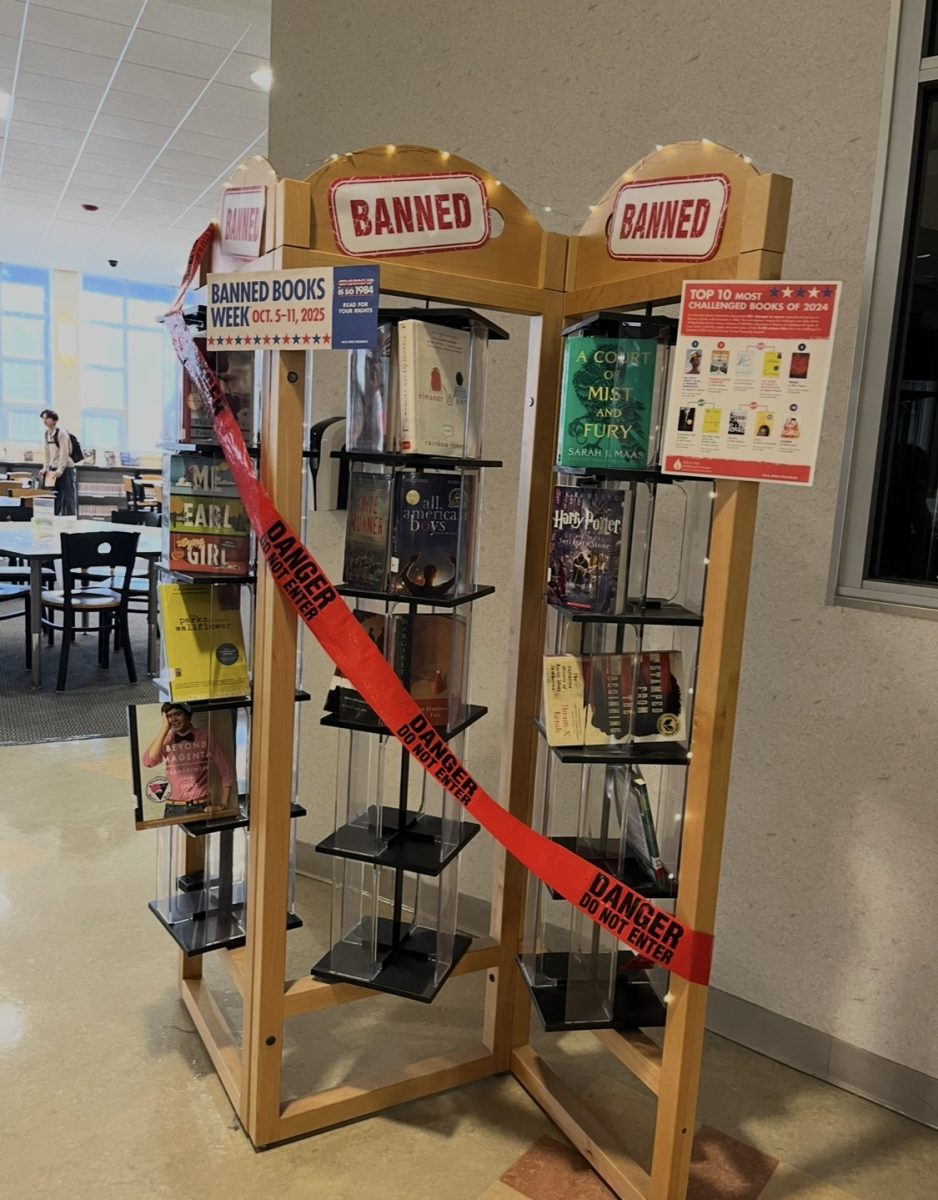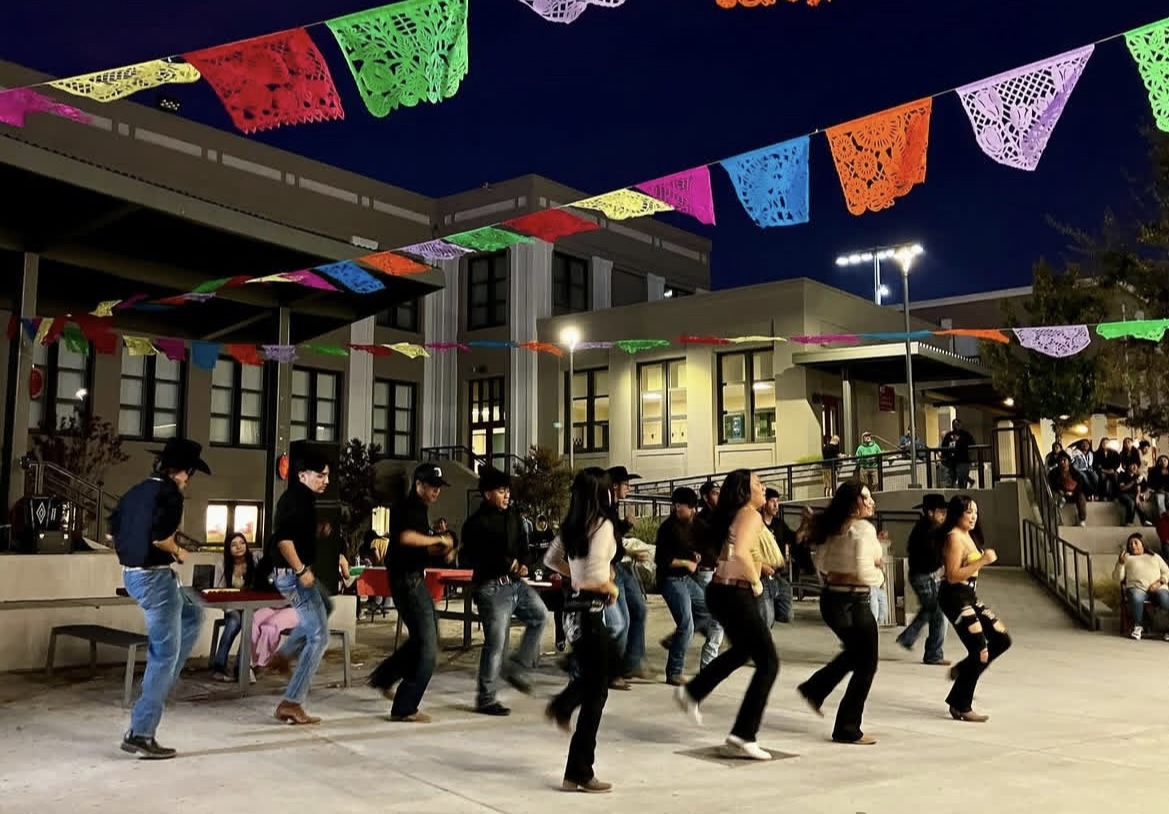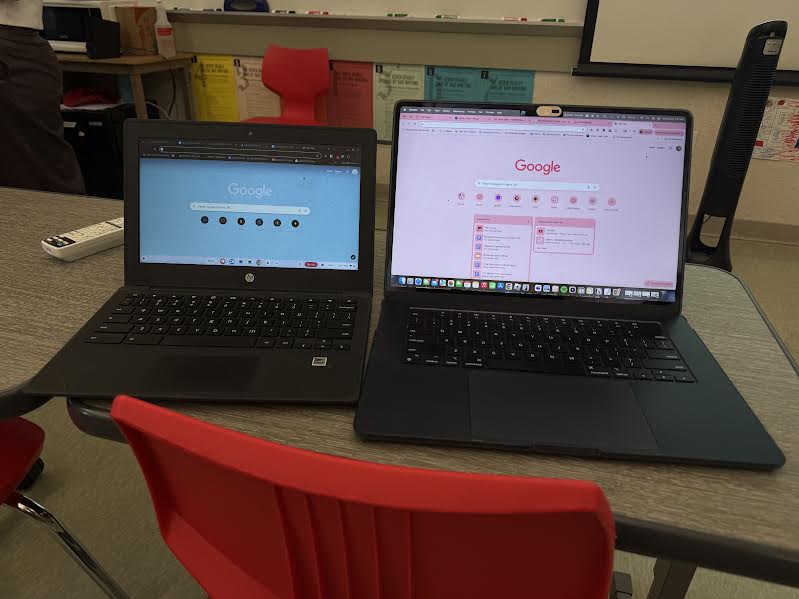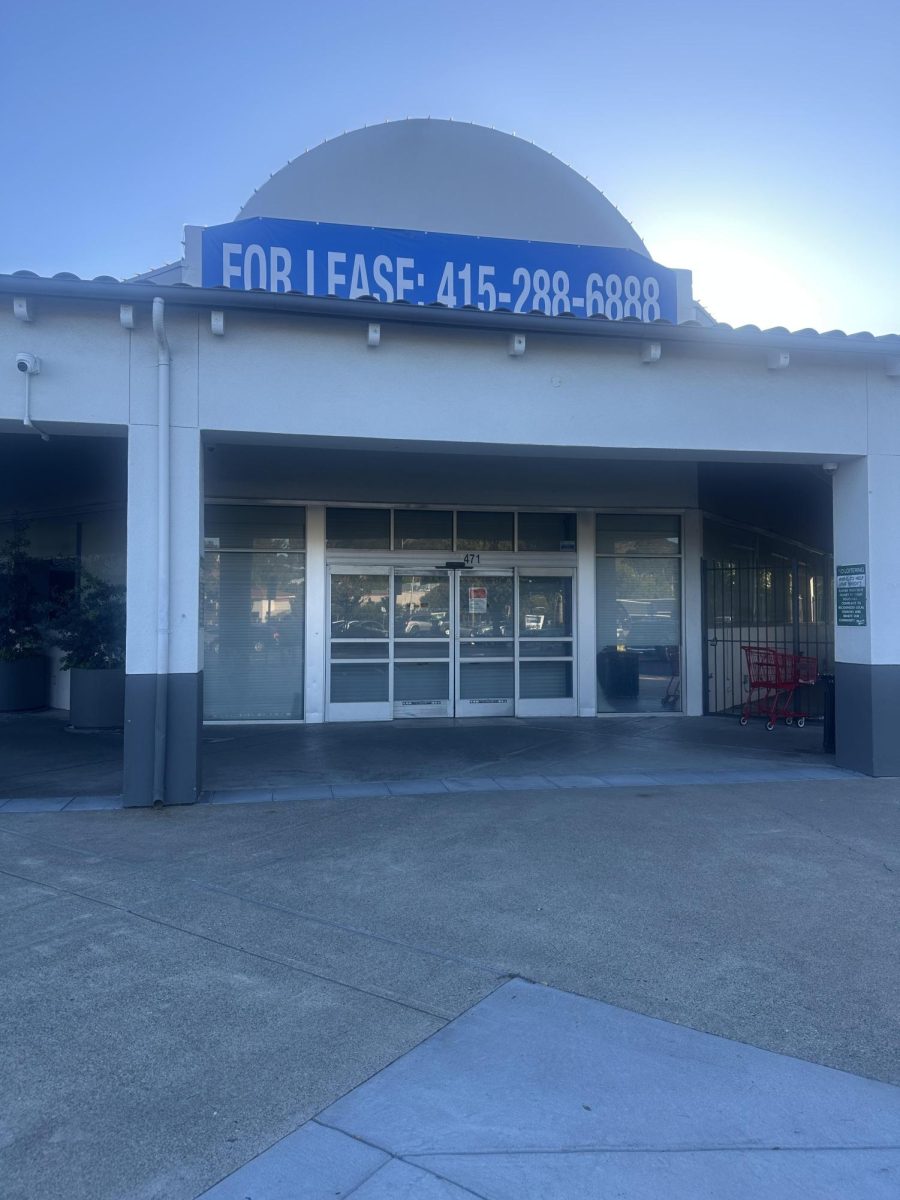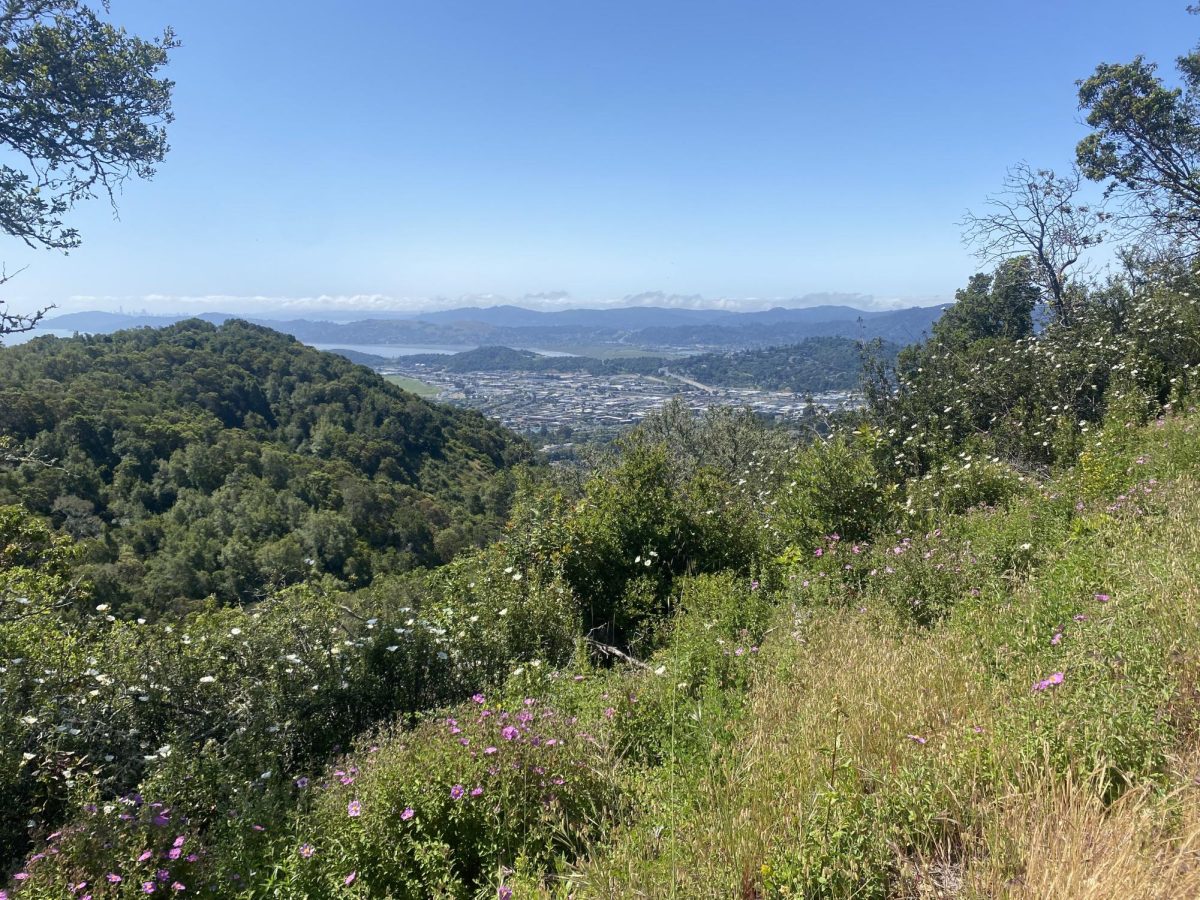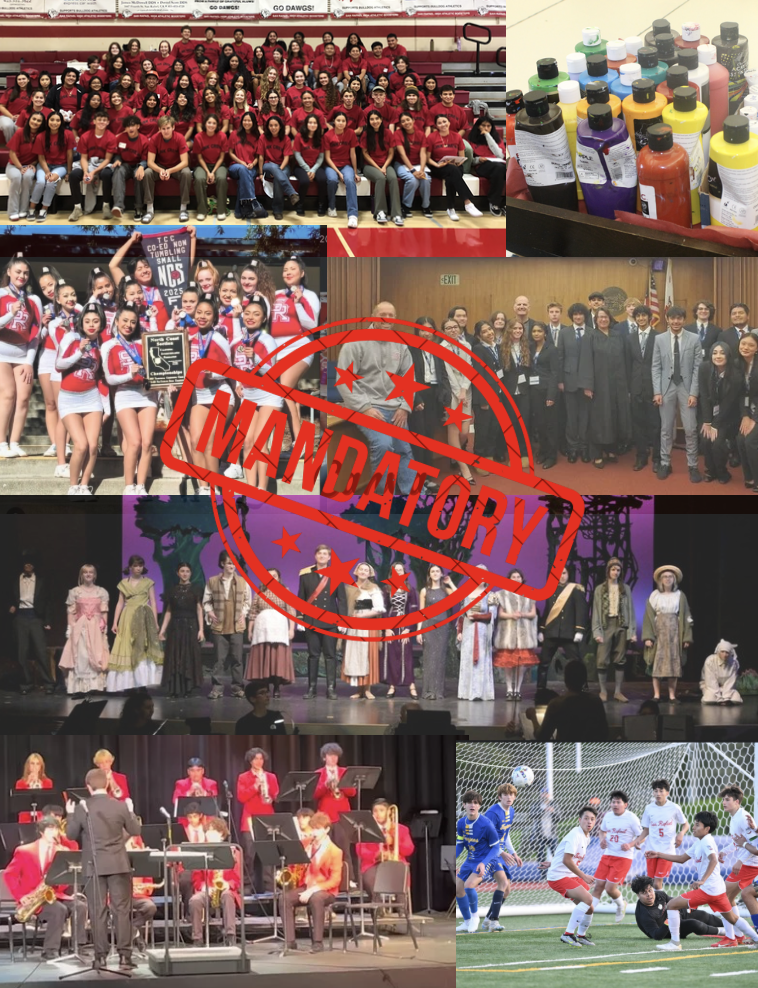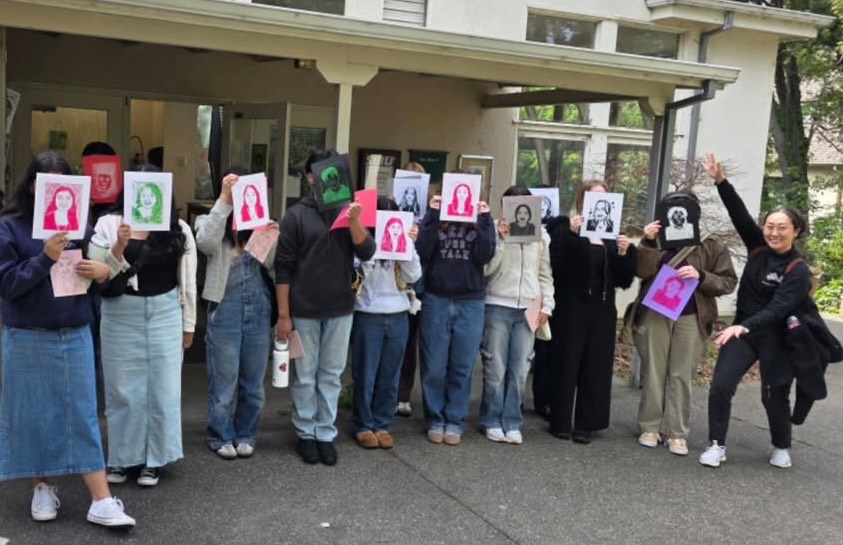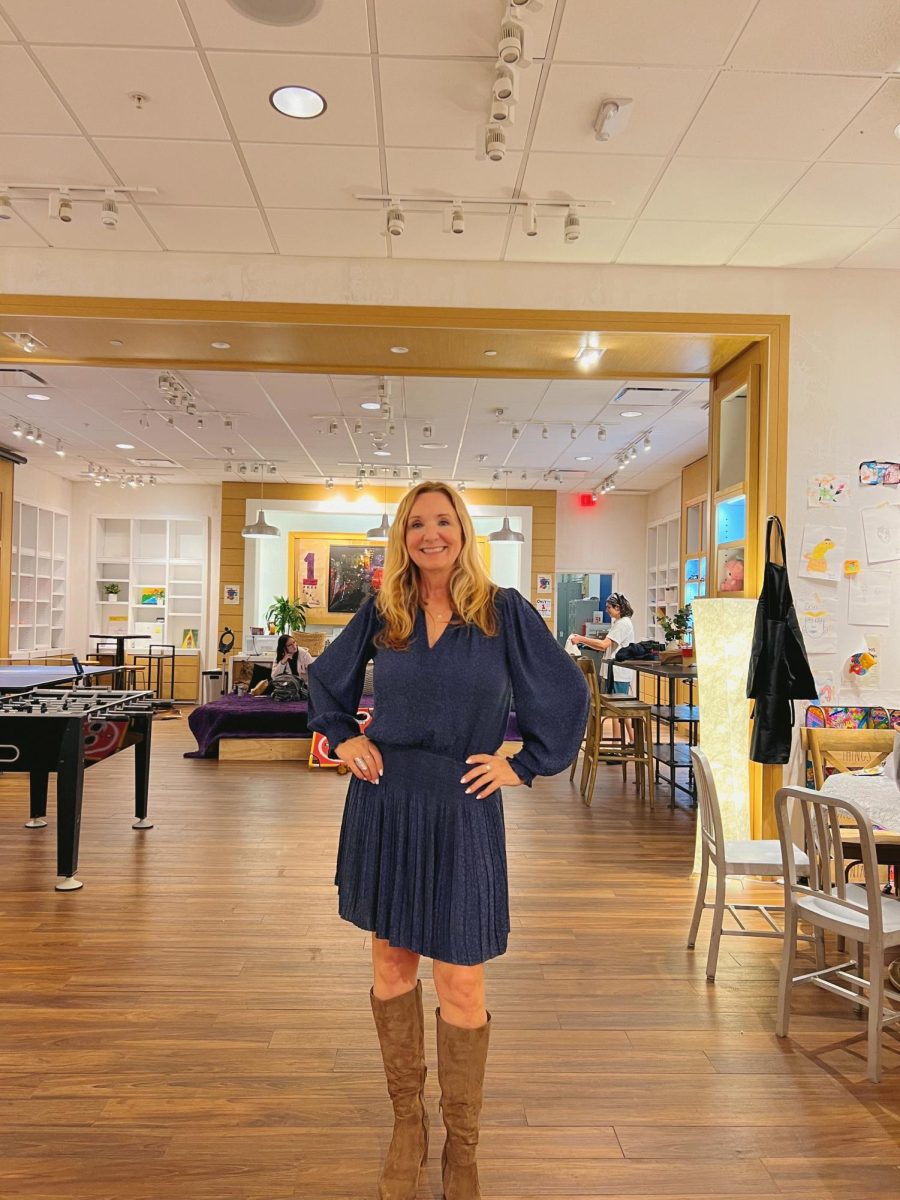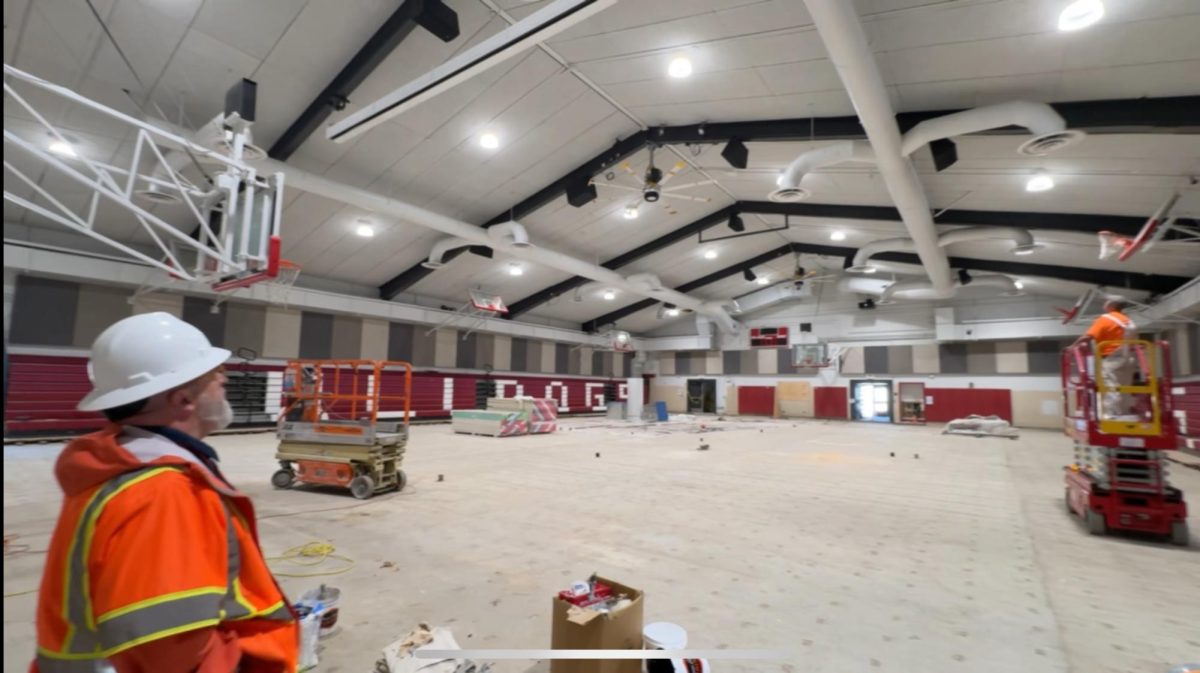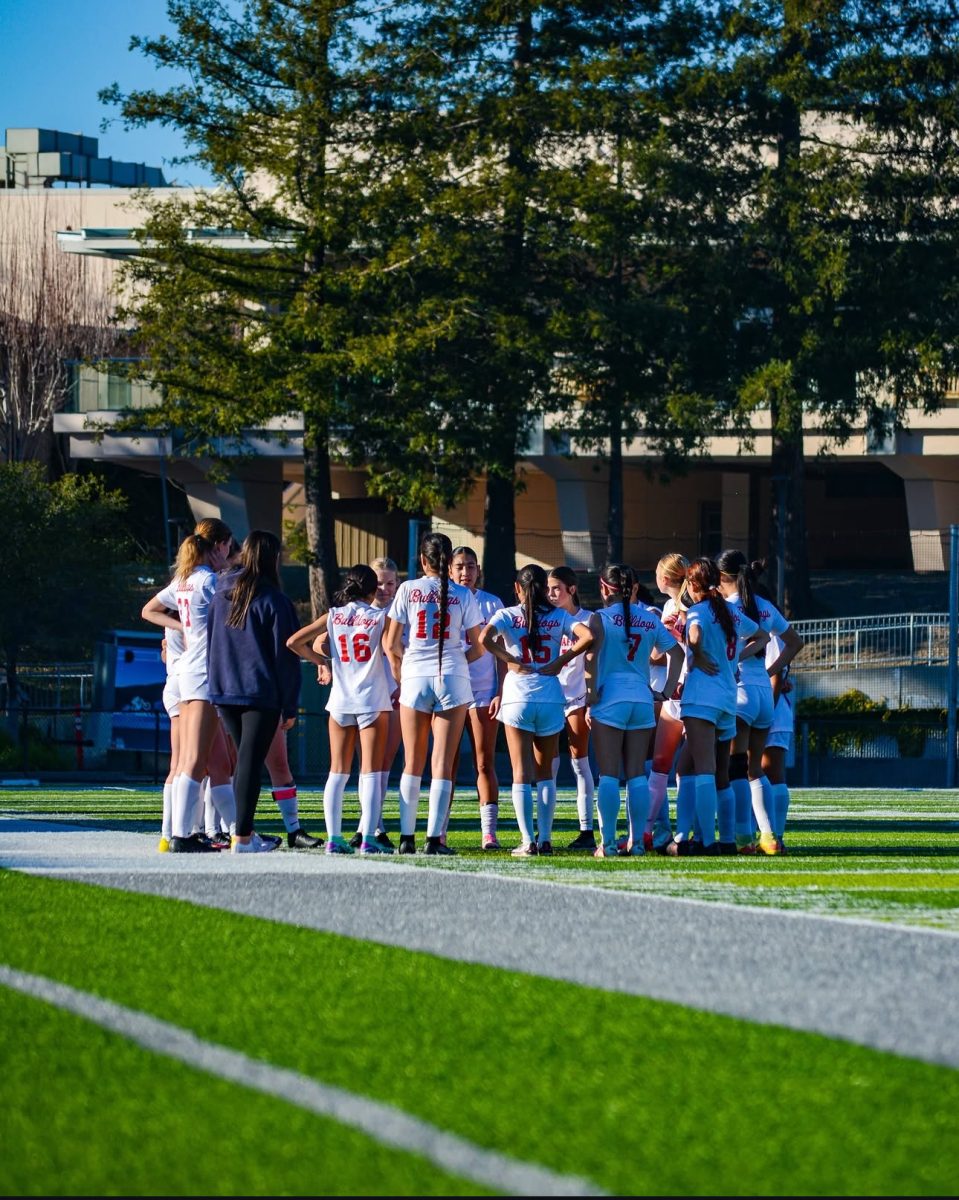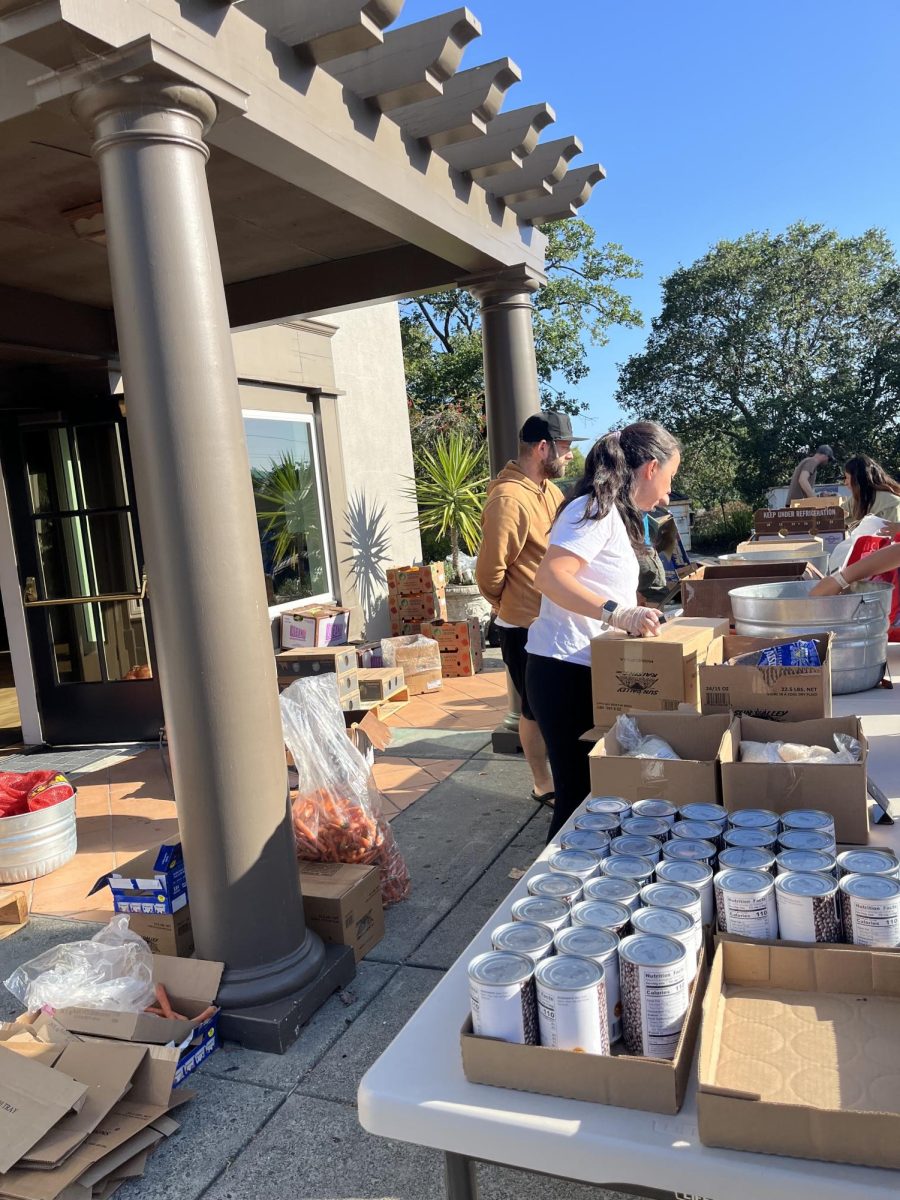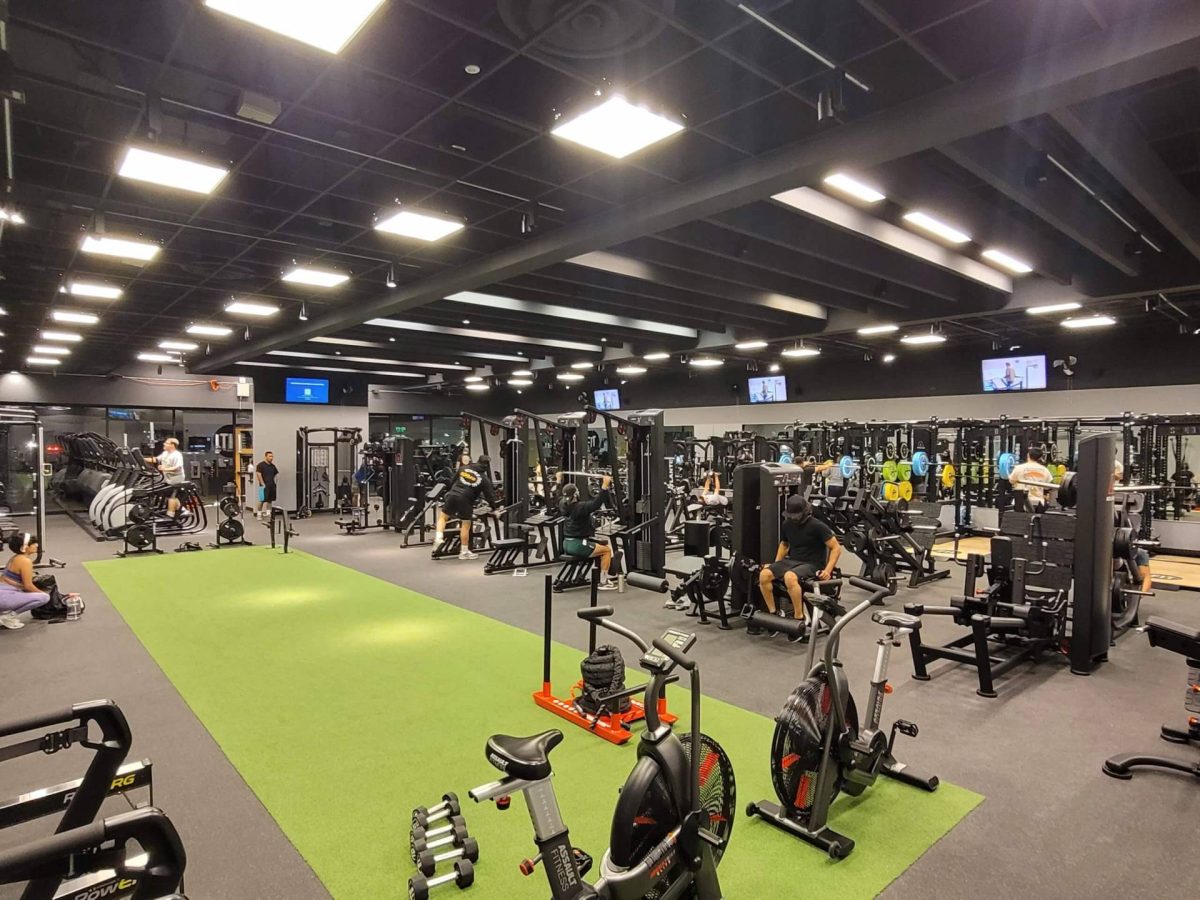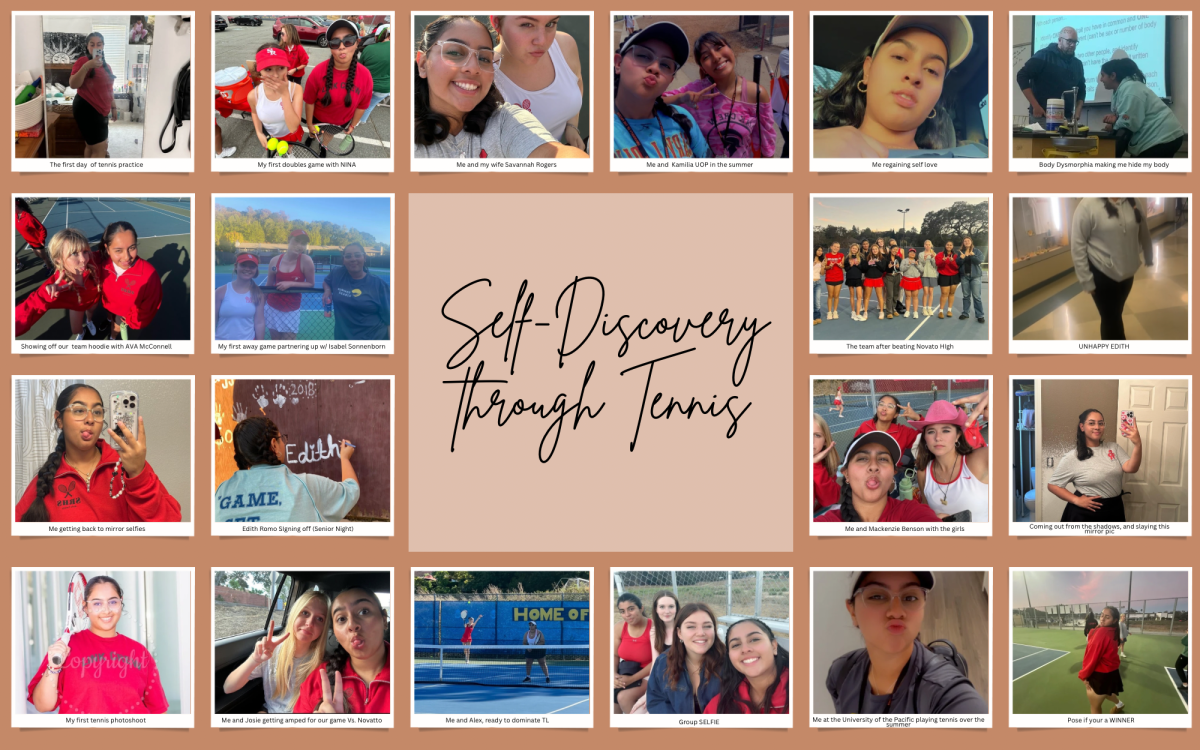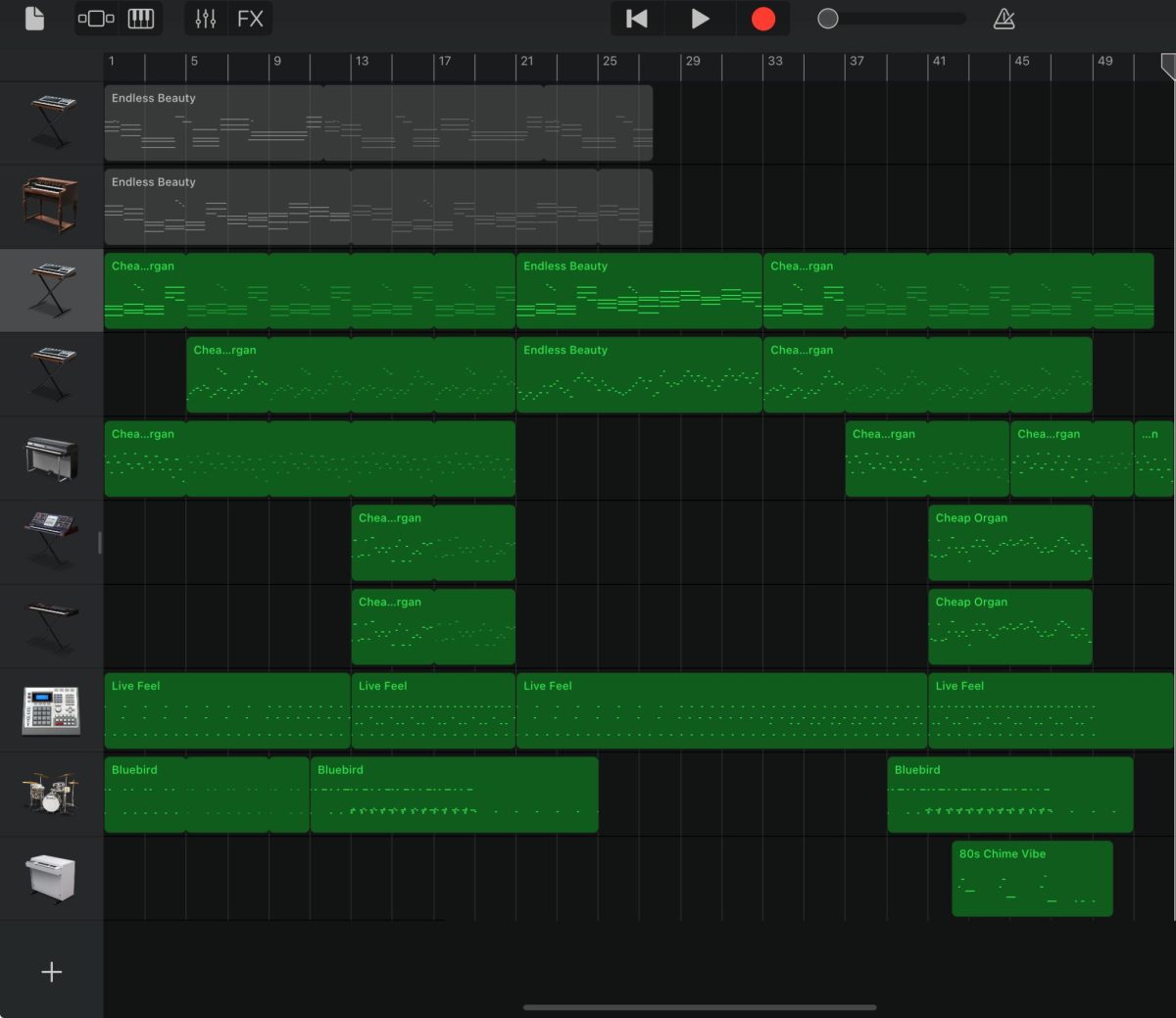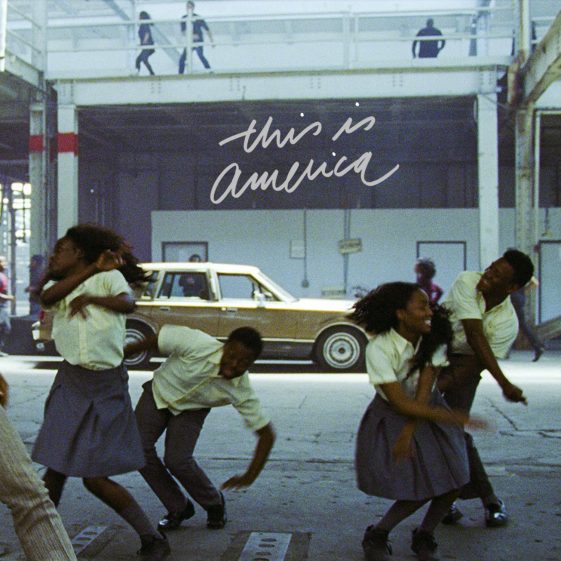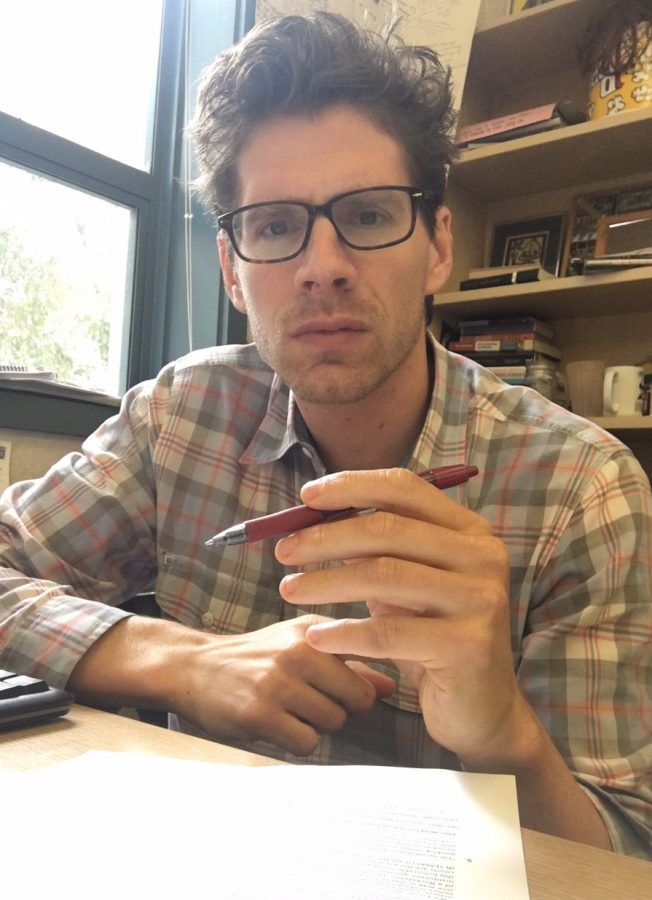
San Rafael High’s open campus setup means anyone can just stroll in whenever they feel like it. If the School Board and District had considered involving students during the brainstorming process for potential solutions, they might have found ways to keep the campus more secure without making the school feel like a prison.
To ensure a safer campus, the School Board and District is currently in the process of installing new fences to protect our school from future threats. Principal Joe Dominguez hopes that by the end of this semester, there will be new gates installed all around the school. “This is going to make it easier for staff to monitor who’s entering the campus and who’s leaving, so I’m really looking forward to that.”
Some argue that the new fences being installed around campus are unnecessary. A lot of students, including myself, don’t like it. It feels like we’re being trapped, and it makes the school feel like a jail rather than a place of learning. We’re not just talking about safety, it’s about how it changes the vibe of the school. Instead of making us feel more secure, it makes us feel restricted and uncomfortable.
However, the lack of unsupervised access creates a potential threat to the SR community. The presence of unauthorized individuals on campus has caused anxiety and concern among students, distracting them from their education.
Veronica Martinez, a senior at SRHS, says, “Sometimes during lunch, I will see random people just walking around campus and the security doesn’t do anything about it. It makes me feel unsafe because what if they are planning something harmful? You never know.”
According to Vice Principal Kent Morales, “It’s such an old school and there’s such a tradition in the neighborhood, people kind of consider it part of the community. There are a lot of neighbors who are used to just sort of walking through from one side to the other, and that’s usually what that is.” This level of freedom on our campus presents a potential security threat that we can no longer ignore.
On the other hand, the recent decision made by the School Board to install fences around the campus has led to a significant amount of controversy among the student body.
Sophomore Lizbeth Santos says, “I feel like the new fences are suffocating because it seems like my freedom is being taken away from me.”
This move has instead created a sense of frustration for students making them feel like important decisions that directly affect them are being made, and they aren’t getting a heads up. The district’s failure to communicate with their students or consider their opinions before conducting huge changes takes away the meaning of community and collaboration that educational institutions should have.
Junior Abisha Rodriguez says, “It’s a waste of money, especially considering that there are so many other areas that the money could have gone to. For example, the bathrooms. The bathrooms, specifically the ones in the older buildings, are disgusting and are never stocked with supplies like soap, toilet paper, and especially paper towels. I think it was a modification that should have been carefully analyzed before jumping right into it.”
Schools are not just buildings where students learn, they’re communities where students actively spend large portions of their lives. Engaging with students in the big decision-making process could have provided valuable insights and developed a deeper connection, ultimately leading to a more thoughtful and effective solution revolving around campus security.
By failing to seek student opinions, the School Board and District has not only overlooked valuable perspectives but also created a sense of mistrust. To move forward, schools must prioritize open collaboration with their students.
Senior Bradly Mazariegos says, “It just feels like the school is having a lack of trust with the students. Having fences put up seems weird to me since the only time I’ve ever experienced being in a school fenced was in elementary school.”
Sophomore Isabella Simon says, “I think that building the fences at our school was a closed-minded decision because the District didn’t even consider any student voices. It makes me feel like the school doesn’t really care too much about the students that attend their school considering we the students are the ones affected by the changes, not the ones who control it.”
As students, we all want to feel safe without being kept away from the outside world. Instead of installing gates that make our school look and feel divided, the School Board and District could consider other measures to protect us from outside threats.
For example, having more security guards at every entry point would help monitor and control who enters and exits the campus. This approach would increase our safety without creating a sense of division.
Security personnel can also be trained to interact with students and staff, creating a sense of community while also sustaining surveillance.
This big decision, given without any further notice or chance for students to offer their input, might come off as a message that the School Board doesn’t value the voices of its students. In a school setting where mutual respect and open conversations should be sought, creating this issue can be particularly damaging.
Senior Savannah Rogers says, “I was caught off guard by the new fences because there was no notice. I think that the school is being too dramatic with these installations because I don’t think we’ve had any incidents that bad that would require these huge changes.”
Students thrive in a setting where they feel as though their opinions matter and their concerns are heard. By excluding them from impactful decisions, the District has created a barrier not just physically, but also in terms of trust.
By involving students, staff, and parents in the planning process, we can create a better secure system that is both effective and considerate. For instance, students could provide insights into how potential solutions might affect daily schedules, access to their classrooms, and overall campus life.
Involving students in such decisions also serves as an educational opportunity, teaching them the importance of public engagement and mutual problem-solving. It allows them to take an active role in shaping their school and raise a sense of responsibility. By choosing to avoid involving students, the School Board and District missed a major chance to model the importance of leadership.
-Translated-
El campus abierto de San Rafael High significa que cualquiera puede entrar cuando quiera. Si la Junta Escolar y el Distrito hubieran considerado involucrar a los estudiantes durante el proceso de intercambio de ideas para encontrar posibles soluciones, podrían haber encontrado formas de mantener el campus más seguro sin que la escuela se sintiera como una prisión.
Para garantizar un campus más seguro, la Junta Escolar y el Distrito están actualmente en el proceso de instalar nuevas cercas para proteger nuestra escuela de futuras amenazas. El director Joe Dominguez espera que para el final de este semestre, se instalen nuevas puertas en toda la escuela. “Esto facilitará que el personal controle quién ingresa al campus y quién sale, así que estoy ansioso por eso”.
Algunos argumentan que las nuevas cercas que se están instalando alrededor del campus son innecesarias. A muchos estudiantes, incluido yo, no les gusta. Se siente como si estuviéramos atrapados y hace que la escuela se sienta como una cárcel en lugar de un lugar de aprendizaje. No solo estamos hablando de seguridad, se trata de cómo cambia el ambiente de la escuela. En lugar de hacernos sentir más seguros, nos hace sentir restringidos e incómodos.
Sin embargo, la falta de acceso sin supervisión crea una amenaza potencial para la comunidad de SR. La presencia de personas no autorizadas en el campus ha causado ansiedad y preocupación entre los estudiantes, distrayéndolos de su educación.
Verónica Martínez, una estudiante de último año en SRHS, dice: “A veces, durante el almuerzo, veo gente al azar caminando por el campus y la seguridad no hace nada al respecto. Me hace sentir insegura porque ¿qué pasa si están planeando algo dañino? Nunca se sabe”.
Según el subdirector Kent Morales, “Es una escuela tan antigua y hay tanta tradición en el vecindario que la gente lo considera parte de la comunidad. Hay muchos vecinos que están acostumbrados a caminar de un lado a otro, y eso es lo que suele ser”. Este nivel de libertad en nuestro campus presenta una amenaza potencial a la seguridad que ya no podemos ignorar.
Por otro lado, la reciente decisión tomada por la Junta Escolar de instalar cercas alrededor del campus ha generado una gran controversia entre el alumnado.
La estudiante de segundo año Lizbeth Santos dice: “Siento que las nuevas cercas me asfixian porque parece que me están quitando mi libertad”.
Esta medida ha creado una sensación de frustración entre los estudiantes, haciéndoles sentir que se están tomando decisiones importantes que los afectan directamente y que no se les está avisando. El hecho de que el distrito no se comunique con sus estudiantes ni tenga en cuenta sus opiniones antes de llevar a cabo grandes cambios elimina el significado de comunidad y colaboración que deberían tener las instituciones educativas.
La estudiante de tercer año Abisha Rodríguez dice: “Es un desperdicio de dinero, especialmente si se considera que hay muchas otras áreas a las que se podría haber destinado el dinero. Por ejemplo, los baños. Los baños, específicamente los de los edificios más antiguos, son repugnantes y nunca están provistos de suministros como jabón, papel higiénico y, especialmente, toallas de papel. Creo que fue una modificación que debería haberse analizado cuidadosamente antes de lanzarse a ella”.
Las escuelas no son solo edificios donde los estudiantes aprenden, son comunidades donde los estudiantes pasan activamente gran parte de sus vidas. Involucrar a los estudiantes en el gran proceso de toma de decisiones podría haber proporcionado información valiosa y desarrollado una conexión más profunda, lo que en última instancia condujo a una solución más reflexiva y efectiva en torno a la seguridad del campus.
Al no buscar las opiniones de los estudiantes, la Junta Escolar y el Distrito no solo han pasado por alto perspectivas valiosas, sino que también han creado una sensación de desconfianza. Para avanzar, las escuelas deben priorizar la colaboración abierta con sus estudiantes.
Bradly Mazariegos, estudiante de último año, dice: “Simplemente siento que la escuela está teniendo una falta de confianza con los estudiantes. Tener vallas instaladas me parece extraño, ya que la única vez que experimenté estar en una escuela vallada fue en la escuela primaria”.
Isabella Simon, estudiante de segundo año, dice: “Creo que construir las vallas en nuestra escuela fue una decisión de mente cerrada porque el Distrito ni siquiera consideró las voces de los estudiantes. Me hace sentir que a la escuela realmente no le importan demasiado los estudiantes que asisten a su escuela, considerando que nosotros, los estudiantes, somos los afectados por los cambios, no los que los controlamos”.
Como estudiantes, todos queremos sentirnos seguros sin estar alejados del mundo exterior. En lugar de instalar puertas que hagan que nuestra escuela se vea y se sienta dividida, la Junta Escolar y el Distrito podrían considerar otras medidas para protegernos de las amenazas externas.
Por ejemplo, tener más guardias de seguridad en cada punto de entrada ayudaría a monitorear y controlar quién entra y sale del campus. Este enfoque aumentaría nuestra seguridad sin crear una sensación de división.
El personal de seguridad también puede ser capacitado para interactuar con los estudiantes y el personal, creando un sentido de comunidad y al mismo tiempo manteniendo la vigilancia.
Esta gran decisión, tomada sin previo aviso ni oportunidad para que los estudiantes ofrezcan su opinión, podría parecer un mensaje de que la Junta Escolar no valora las voces de sus estudiantes. En un entorno escolar donde se debe buscar el respeto mutuo y las conversaciones abiertas, crear este problema puede ser particularmente dañino.
Savannah Rogers, estudiante de último año, dice: “Las nuevas vallas me tomaron por sorpresa porque no había ningún aviso. Creo que la escuela está siendo demasiado dramática con estas instalaciones porque no creo que hayamos tenido ningún incidente tan grave que requiera estos enormes cambios”.
Los estudiantes prosperan en un entorno en el que sienten que sus opiniones importan y sus preocupaciones son escuchadas. Al excluirlos de las decisiones de impacto, el Distrito ha creado una barrera no solo física, sino también en términos de confianza.
Al involucrar a los estudiantes, el personal y los padres en el proceso de planificación, podemos crear un sistema más seguro que sea a la vez efectivo y considerado. Por ejemplo, los estudiantes podrían brindar información sobre cómo las posibles soluciones podrían afectar los horarios diarios, el acceso a sus aulas y la vida en el campus en general.
Involucrar a los estudiantes en tales decisiones también sirve como una oportunidad educativa, enseñándoles la importancia de la participación pública y la resolución mutua de problemas. Les permite asumir un papel activo en la configuración de su escuela y aumentar el sentido de responsabilidad. Al optar por evitar la participación de los estudiantes, la Junta Escolar y el Distrito perdieron una gran oportunidad de modelar la importancia del liderazgo.

